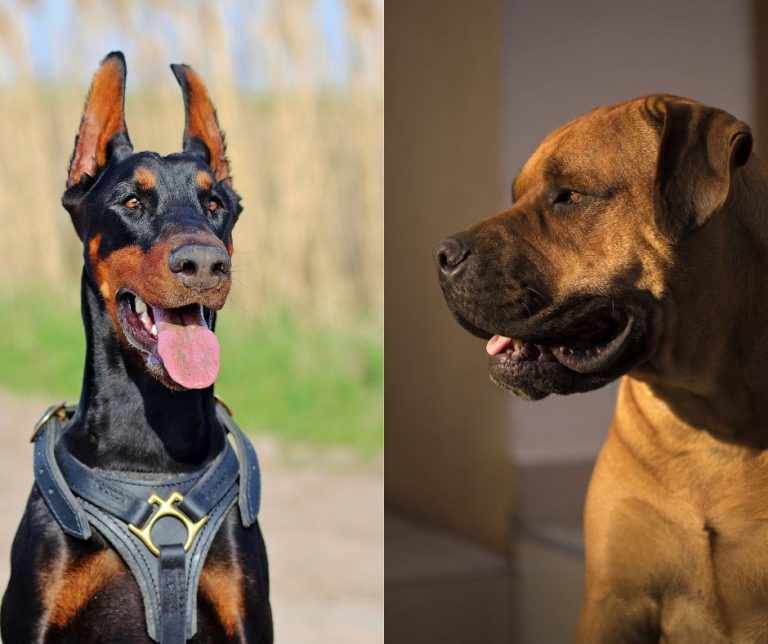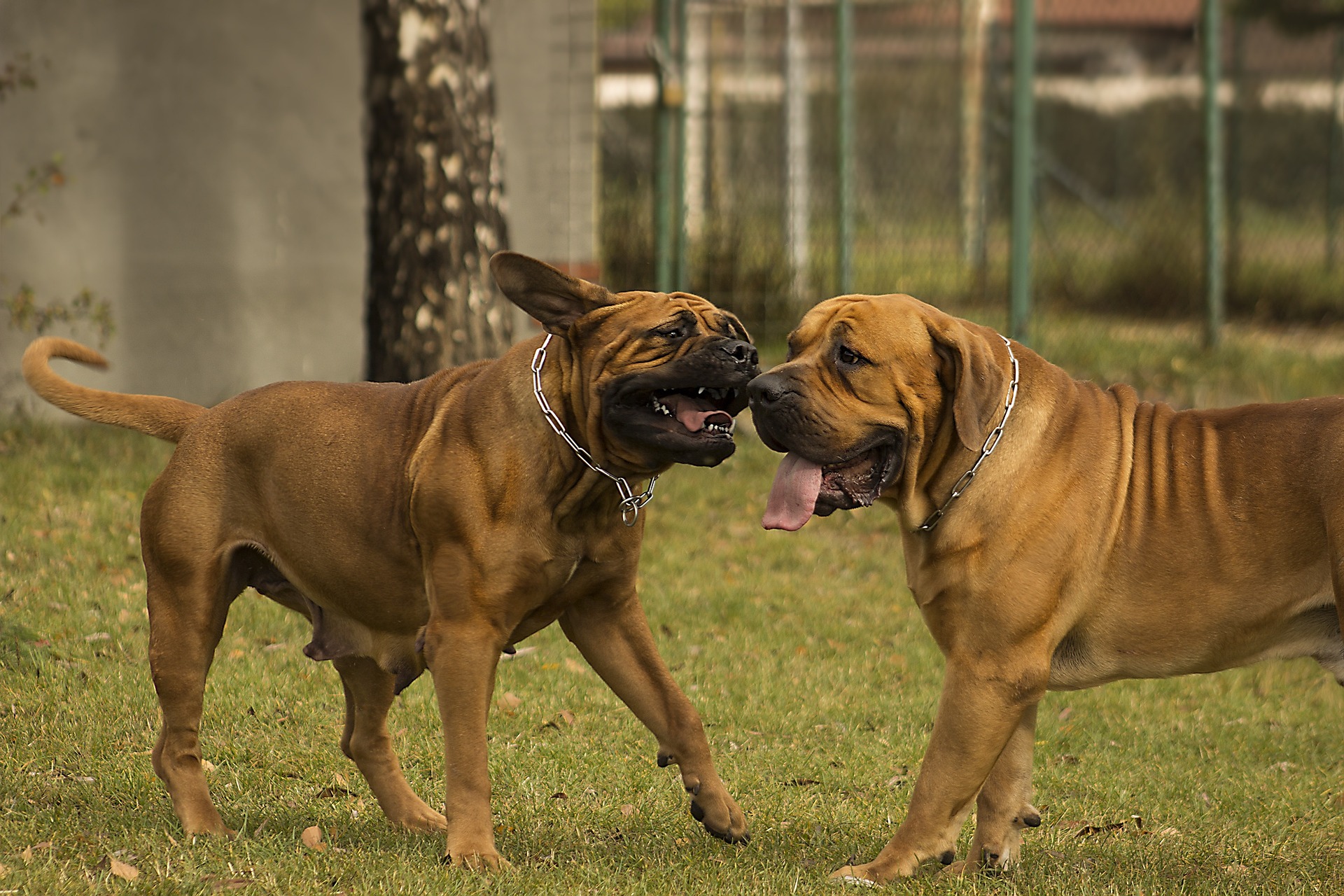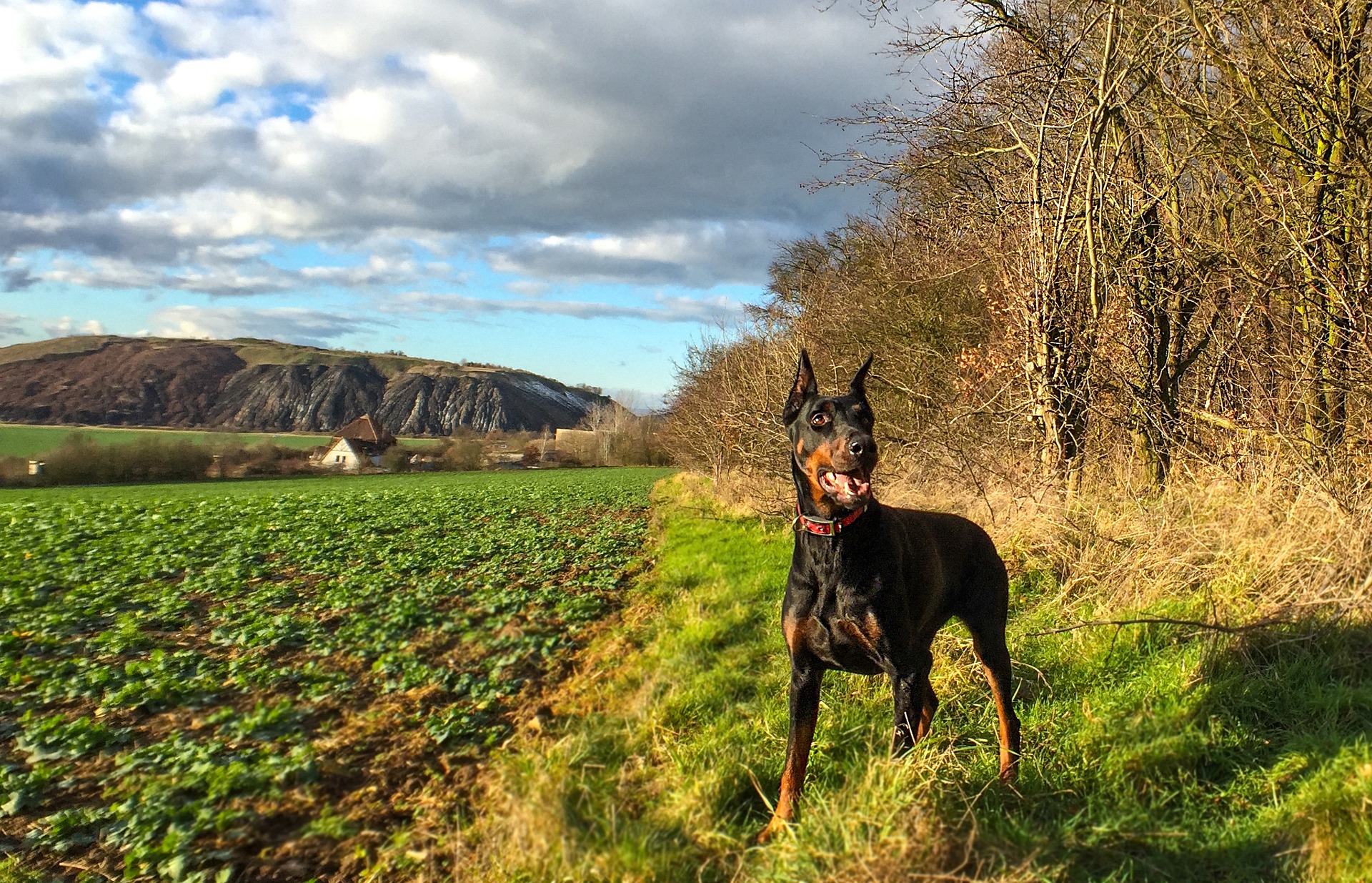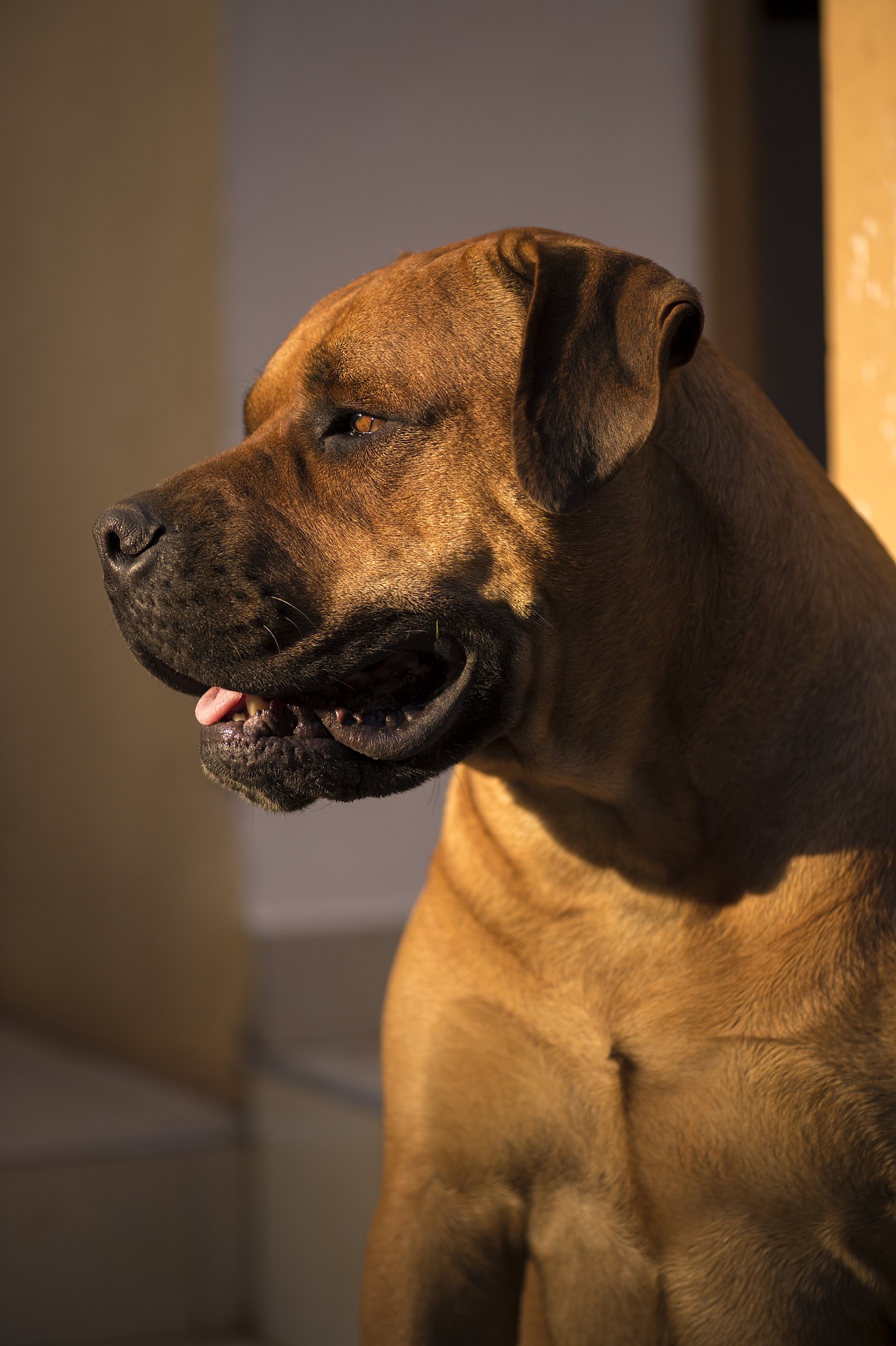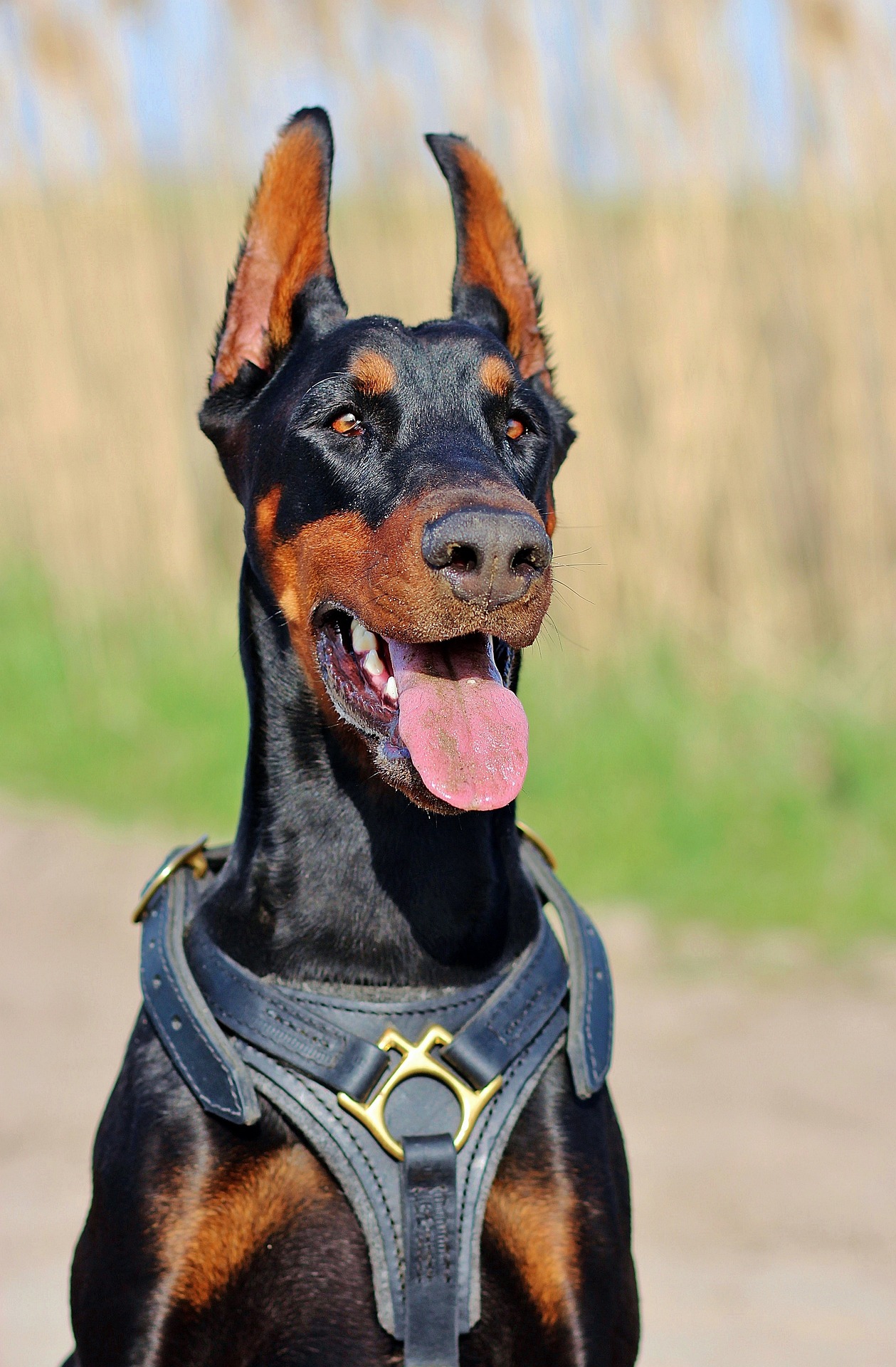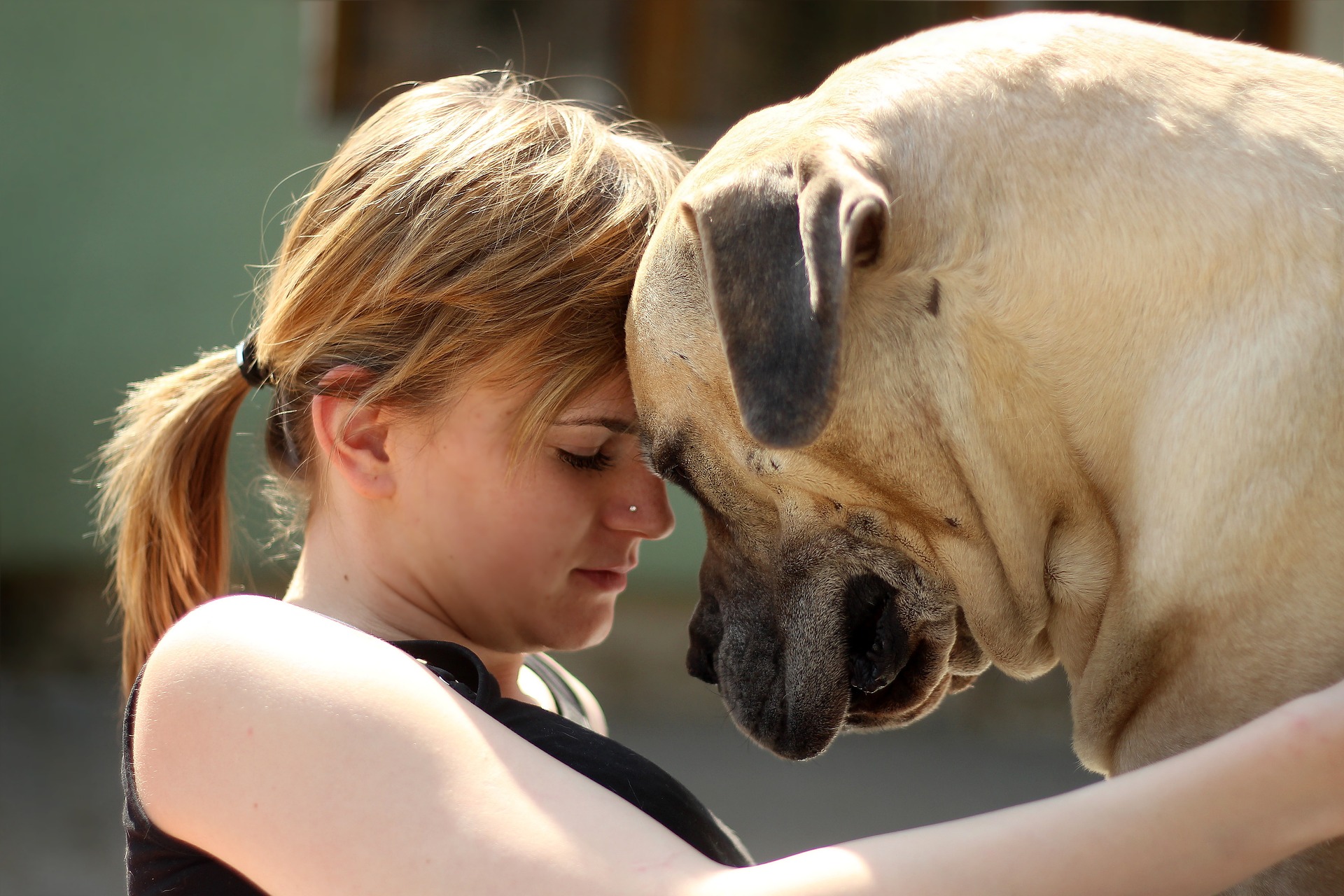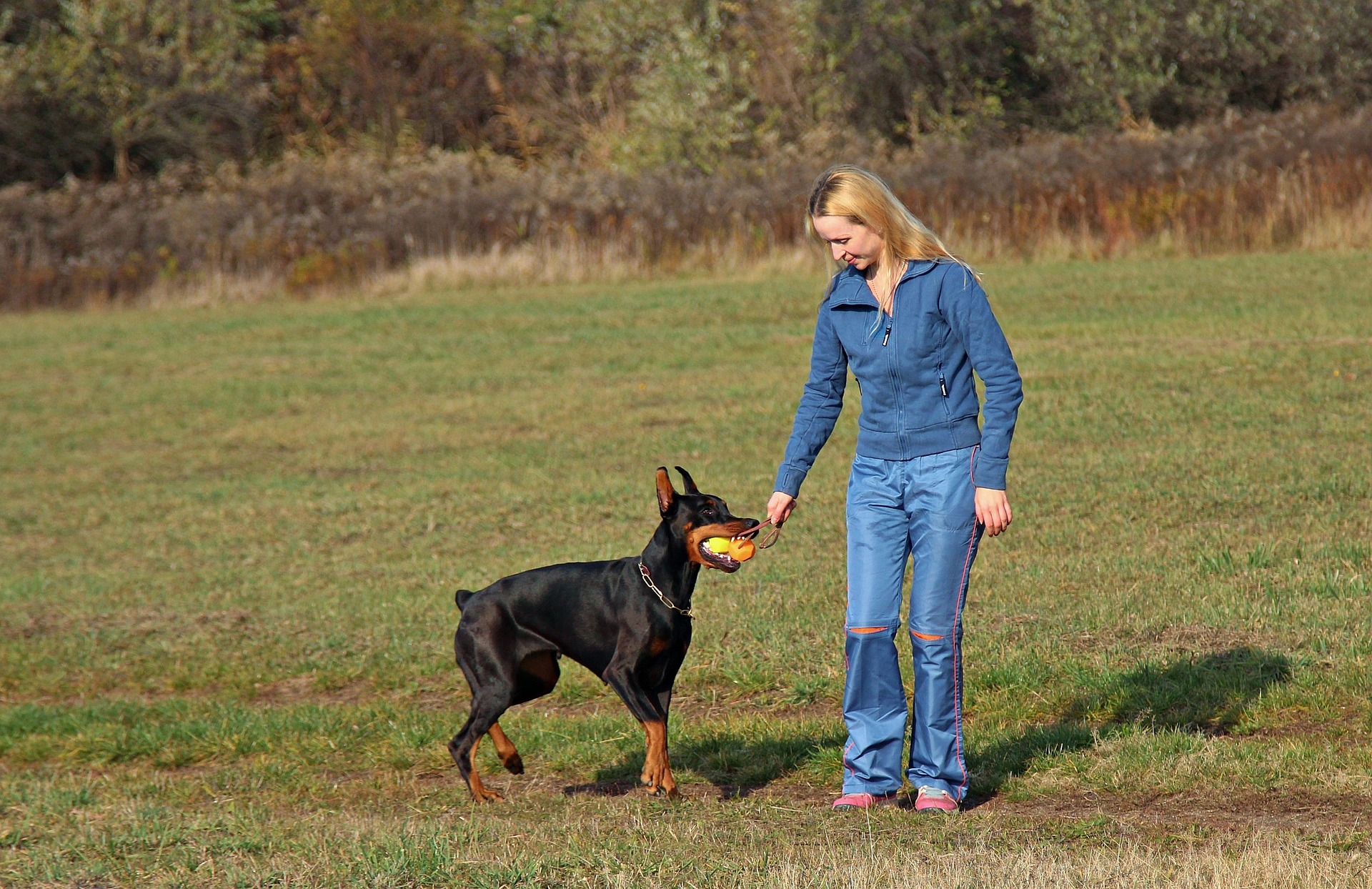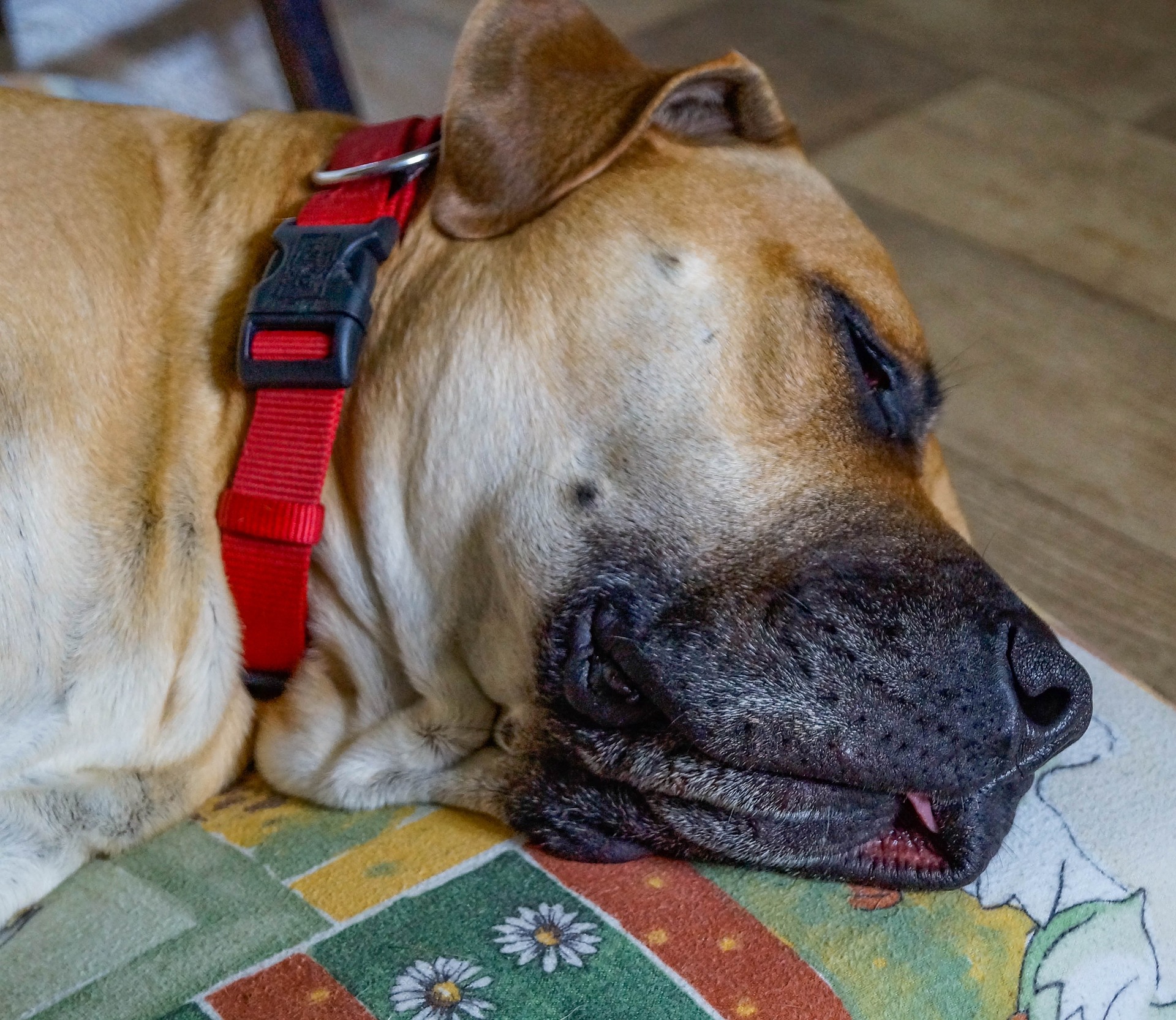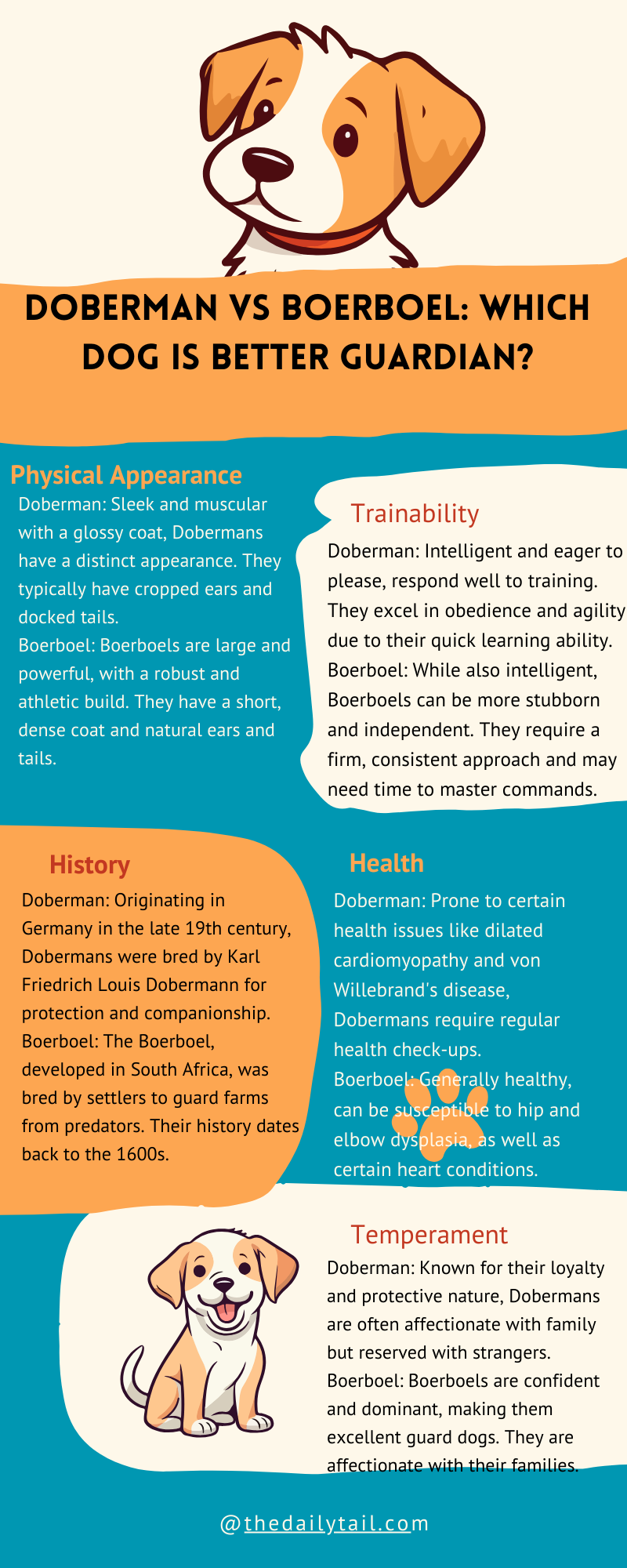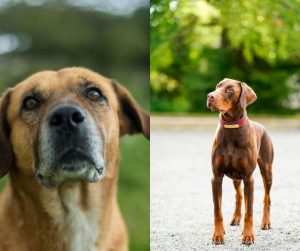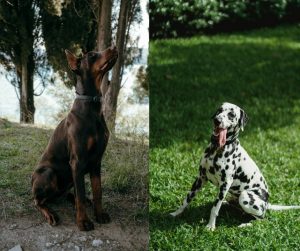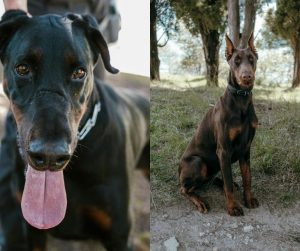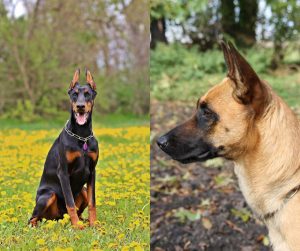Some 30 to 50 years ago, a large, big dog like the Doberman Pinscher was only a protector. Pet parents rarely got a Doberman or a Boerboel as a family pet.
Yet, as someone who has lived with dogs for most of his life, I am happy to see a change. In the past several years, things have changed. We do not see Dobermans as dangerous big dog protectors. They are amazing family pets as well.
Now, I must say, sometimes, you want a guard dog. But you also want a puppy that will fit within the family. So, with that in mind, today, I want to help prospective dog owners decide between Doberman vs Boerboel.
We have two different dogs here. They come from different continents. Yet, they had the same purpose.
While the sleek and agile Doberman boasts a background of being a superb guard dog, the robust Boerboel carries the legacy of a farm protector and a family companion.
Both dog breeds, when matched with the right family, can bring joy and a sense of security to their human companions.
Key Takeaways
- The Doberman Pinscher and the Boerboel are both strong and loyal dogs with distinct characteristics
- Consideration of exercise needs and living conditions is essential for a good match between pet and family
- Health and lifespan factors are important for the long-term commitment involved in adopting either breed
Origins and History
When looking at the roots of two impressive dog breeds, the Doberman Pinscher and Boerboel, it’s interesting to see how their histories reflect their development into the guardians they are today.
Born in different parts of the world, each breed has a unique story that contributes to their characteristics.
Doberman Pinscher Roots
Originating in Germany during the late 19th century, the Doberman Pinscher was the brainchild of a tax collector named Karl Friedrich Louis Dobermann.
He wanted a loyal and protective companion for his risky job. By mixing a handful of breeds including the Rottweiler, German Pinscher, and Weimaraner, the goal was to create a strong, intelligent watchdog.
These dogs hit the show ring for the first time in 1897, but they had already made their appearance at dog markets as early as 1863.
Boerboel Beginnings
Meanwhile, in South Africa, the Boerboel was being shaped by a totally different set of needs.
This breed has its origins in the dogs brought by Dutch, French, and British settlers in the 17th century. These settlers needed big, strong dogs to protect their homes and farms from wild animals and other dangers.
The Boerboel, which means “farm dog” in Afrikaans, was a result of breeding these European dogs with indigenous African breeds. They carved out their own history in tough environments, renowned as a versatile farm dog and formidable protector.
Physical Characteristics
When comparing the Doberman Pinscher dog breed to the Boerboel, one can’t help but notice the distinct differences in their physical makeup.
Doberman Build
The Doberman Pinscher puppy is a picture of elegance and agility.
Males usually stand tall at about 26 to 28 inches, while females are slightly smaller at 24 to 26 inches in height.
They typically weigh between 60 to 100 pounds, which makes them large dogs, but not quite as heavy as some of their mastiff cousins.
Their coat is short, smooth, and lies close, with color possibilities like black, red, blue, or fawn, often with rust markings.
One of the most recognizable traits of a Doberman’s appearance is their pointed ears which are often cropped to stand erect.
Boerboel Stature
On the other paw, the Boerboel is a giant, with a formidable size that reflects its heritage as a farm dog bred for strength.
They stand between 24 to 28 inches but carry a lot more weight, ranging anywhere from 150 to 200 pounds.
These robust dogs have a short and sleek coat that’s well-suited to their active lifestyle, and their color can range from light cream to all shades of brown and brindle.
Unlike the Doberman, Boerboels tend to have wider, blockier heads and their ears are naturally broad, short, and hang close to the head.
Temperament and Personality
When comparing the Doberman vs Boerboel dog breed, we instantly can see distinctive personality traits. The Doberman shows high levels of intelligence and protectiveness, while the Boerboel is known for being loyal and affectionate.
Doberman Disposition
Dobermans are an intelligent breed, well-known for their sharp minds.
They catch onto training quite quickly and love a good mental challenge.
They also show a protective streak, which makes them excellent guard dogs.
When it comes to their loved ones, they are deeply affectionate.
These dogs are known for their undying loyalty toward their owners, which pairs well with their confident and fearless nature.
Though they’re serious about their duties, they have a fun side and can be very playful with their family.
Boerboel Temper
The Boerboel is a breed that puts its heart into everything.
They’re gentle giants with their families, showing plenty of love and affection.
Yet, when it comes to protecting their home and loved ones, they stand tall and courageous.
This breed’s loyalty is through the roof; once they’ve bonded with you, they’re your companion for life.
They’ve got a playful side too and often carry their puppy-like cheerfulness well into adulthood.
Boerboels are a confident bunch, not one to shy away from responsibility, always ready to stand guard with a calm yet firm presence.
Health and Lifespan
When thinking about bringing a furry friend into your life, understanding their health and how long they might be by your side is important. Dobermans and Boerboels come with distinct health profiles and lifespans that any potential dog owner should consider.
Doberman Health Issues
The Doberman Pinscher is a strong breed, but they’re not free of health issues.
On average, a Doberman’s life typically spans around 10-12 years.
It’s worth noting that they can be prone to certain health problems. Some of them include:
- Hip Dysplasia: A condition where the hip joint doesn’t fit together perfectly, which can lead to arthritis or lameness
- Cardiomyopathy: An ailment of the heart muscle that can lead to heart failure
Keeping them active and regular vet check-ups can help maintain their health and potentially catch any issues early on.
Boerboel Health Concerns
Boerboels are powerhouse dogs originating from South Africa, with a slightly shorter average lifespan, lying between 8-10 years.
They share some common health concerns with other large breeds, like:
- Hip Dysplasia: Just like Dobermans, Boerboels can also suffer from this joint issue
Their robust size requires attention to diet and exercise to prevent obesity, which is a risk factor for many health issues in large breeds. Regular health screenings for the Boerboel can play a critical role in preventing and managing health complications.
Suitability as Family Pets
When thinking about what kind of dog to bring into your home, it’s important to know how well they’ll mesh with your family life.
Both Dobermans and Boerboels have their unique characteristics that can make them great family pets, but they also require certain considerations to ensure they fit well with your household.
Dobermans in the Home
Dobermans are often seen as noble and alert dogs that are excellent with family members when properly trained.
They’re intelligent and responsive to dog training, which means they can be well-behaved around kids.
However, they do have plenty of energy and thrive when they have a job to do or can participate in activities like walks or games.
Dobermans’ energy levels and their need for stimulation should be considered.
Busy families might need to commit to daily exercise to keep a Doberman happy.
They’re good for people, even for those new to owning a dog, as long as they can keep up with the Doberman’s active lifestyle.
With their strong protective instincts, Dobermans make excellent guard dogs.
Their loyalty towards the family is unwavering, and they are commonly used for protection. A Doberman’s loyalty means that once you become their family, they’re your dedicated protector.
Boerboels with Families
On the other hand, Boerboel dogs, sometimes known as South African Mastiffs, are large, sturdy canines with a calm demeanor and are known for being good with children.
They are natural protectors, not only to property but to their human family as well, making them reliable in the role of a guard dog.
Boerboels require consistent leadership and training from an early age to ensure they become well-integrated family members.
They’re not typically recommended for first-time dog owners because of their size and strength, but once trained, they’re loyal and gentle with their family.
These dogs need space and enjoy having a job to do, which is something a family can provide through interactive play or tasks.
A Boerboel can fit well into the family setting, offering both companionship and an innate sense of protection for its loved ones.
Exercise and Training Needs
Both the Doberman Pinscher and the Boerboel thrive on staying active and require consistent dog training to be at their best.
Their energy levels and intelligence make them eager learners who are happiest when they’ve got a job to do or space to burn off steam.
Doberman Activity Requirements
Doberman dogs are the epitome of high energy dogs.
These pups need plenty of exercise each day to keep them from getting bored and to maintain their muscle tone.
Think an hour or two of activities, including brisk walks, runs, or even agility courses if you’re feeling adventurous.
They’re smart cookies, too, which means they catch on quickly during training sessions.
They enjoy challenging games that test their brains as much as their legs.
- Daily Exercise: At least 1 to 2 hours
- Types of Exercise:
- Brisk walking
- Jogging alongside you
- Agility training
- Dog park playtime
- Interactive games like fetch or frisbee
Training a Doberman is usually a smooth ride—they’re intelligent and take to lessons quite well.
It’s less about if they can learn and more about how to keep them engaged.
They respond best to positive reinforcement, so keep the treats handy, and remember, a happy Doberman is one who feels both physically and mentally fulfilled.
Boerboel Exercise Regimen
Boerboel dogs are powerhouses. They’ve got energy in spades but tend to have a slightly lower top speed than their Doberman counterparts. Still, they need their share of exercise—think moderate to high levels—to match their sturdy build and spirited nature.
When it comes to routine, a Boerboel enjoys a good mix of walks and free play in a secure area. Due to their protective instincts, it’s key to mix in obedience training as well to ensure they know who’s the boss and can be reliable family protectors.
- Daily Exercise: 30 to 60 minutes
- Training:
- Obedience training is a must
- Socialization with different people and settings
- Strength-building activities, like tug-of-war
Boerboels are also quite intelligent and benefit greatly from regular training sessions. They might be a bit more independent than Dobermans, so patience and consistency are your best friends here. And just like any other dog, they’ll eat up the praise when they get things right.
A mix of physical activity and training keeps them sharp and content. Remember, a busy dog is a happy dog! And who doesn’t want a happy dog?
Living Environment Adaptability
When finding a spot for a dog in one’s living space, the adaptability of the breed to different home types is a significant factor to consider.
Doberman Living Space
The Doberman Pinscher is quite adaptable when it comes to its living environment. These dogs do well in an apartment setting as long as they get enough exercise during the day. It’s important for them to have regular activity to keep them happy and healthy.
In terms of climate, Dobermans are okay with a bit of cold weather, but they really should have a warm, cozy spot indoors during the winter months. These dogs have short coats and can become chilly if they’re left out in the cold for too long.
- Apartment: Suitable with daily exercise
- Home: Thrives with space to stretch
- Indoor: Loves being close to their family
- Cold Weather: Needs warmth and shelter
Boerboel Housing
Boerboels, on the other hand, are large, robust canines best suited for homes with more space like a yard. They can live in apartments as well, yet this might not be the ideal situation due to their size and high energy levels.
A Boerboel needs room to roam and play, so a home with a backyard is more suitable. As for climate tolerance, Boerboels have a short coat too but they are a hardy breed. They cope quite well with colder temperatures, however, they should also have a warm place to snuggle up during the nippy weather.
- Apartment: Possible but challenging
- Home: A large yard is preferred
- Indoor: Needs space to move comfortably
- Cold Weather: Rather resilient but still need warmth
Care Requirements
When it comes to taking care of Dobermans and Boerboels, it involves specific grooming routines to keep them looking sharp and feeling great. Let’s talk about what it takes to maintain the coat and overall cleanliness of these two robust breeds.
Grooming the Doberman
Dobermans have a smooth coat that’s pretty easy to take care of. They don’t need fancy haircuts, just a good brush once a week to keep shedding under control. Here’s a simple breakdown:
- Brushing: Weekly, with a medium-bristle brush or a rubber grooming mitt
- Bathing: Once every few months, unless they find something smelly to roll in
- Nail Care: Every month if they don’t naturally wear them down
- Teeth: Brushing a couple of times a week is ideal to keep the pearlies white
- Ears: Check them regularly for dirt and keep them dry to prevent infections
Remember, Dobermans don’t really drool much, so that’s one less thing to wipe up!
Maintaining a Boerboel
Boerboels are pretty chill when it comes to grooming too, but they do have a bit more heft to manage.
Especially with drool – they can be drool machines, especially after eating or drinking. Here’s the lowdown on keeping a Boerboel in tip-top shape:
- Brushing: Once weekly, particularly during seasonal changes when they shed more
- Bathing: Every few months, but regular wipe downs can help, especially with drool
- Nail Care: Routine trimming, about once a month, to avoid overgrowth
- Teeth: Regular brushing; those big jaws need to stay clean
- Ears: Routine checks and cleaning are necessary just like with Dobermans
Both breeds bring joy and need love and a bit of elbow grease to stay clean and healthy.

